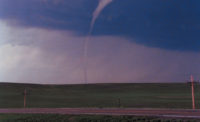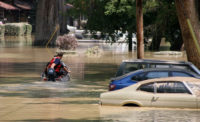U.S. Healthcare Ill Prepared for Disasters

U.S. infrastructure and systems to deliver health care after catastrophic events such as earthquakes and widespread disease are rudimentary at best, a report says.
According to an article from U.S. News, the Institute of Medicine (IOM) released a report Wednesday providing a resource manual to help healthcare providers — hospitals and outpatient clinics, public-health departments, emergency medical systems, public-safety agencies and government offices — to deliver care as effectively as possible to the greatest number of people during a disaster.
The report is recommending a systems-based approach to allocating resources and delivering care, as well as providing tools and guidelines to help agencies and organizations identify their core functions, during catastrophes, the article says.
Only a few communities in the U.S. have the level of organization needed to provide oversight and care for a huge number of victims, the report says.
"Health professionals can bring the best care to the most people by using a systems approach that involves thoughtful coordination among all stakeholders and good planning and coordination among all levels of government," said report committee chairman Lawrence Gostin, associate dean and a professor of global health law at Georgetown University Law Center, in an IOM news release. "This report provides an overarching framework for action in such events and provides detailed standards for each responsible group."
Looking for a reprint of this article?
From high-res PDFs to custom plaques, order your copy today!








